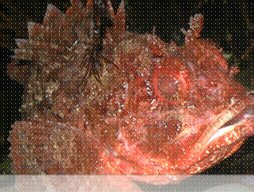|

Venus gallina <4 cm. One of the dominant species on sandy bottom. Its density being reduced in Black Sea in last years.
|

Donax trunculus <4 cm. Dominant bivalvian species of Black Sea sandy shallows
|
|

Scapharca inaequivalis <8 cm. Evolutionary old bivalve of Indo-Pacific origin, invaded the Black Sea in 1960s. One of the dominant species on sandy bottom to 40m depth. Edible bivalve with orange-yellow flesh
|

Cerastoderma lamarcki <7 cm, possibly extinct in the Black Sea, completely eaten by Rapana venosa.
|
|

Cerastoderma glaucum <4 cm, became rare in the Black Sea, whereas it's one of the dominant bivalvian species in the Sea of Azov
|

Parvicardium exiguum <8 cm,
very rare in the Black Sea
|
|

Pitar rudis <2 cm, one of the dominant
species of the Black Sea sandy bottom at 10-40m depth
|

Polititapes aurea <4 cm,
became rare species in the Black Sea
|
|

Spisula triangula <2.5 cm,
common species of sandy bottom
|

Moerella (Tellina) tenuis <2 cm,
annual species
|
|

Moerella (Tellina) donacina <2 cm, lives in soft sediments deeper than 10m, annual species
|

Gouldia minima <0.7 cm, lives in soft sediments deeper than 10m; one of dominant species as recently as 1980s, rare species in the Black Sea now, eaten by Rapana venosa whelk
|
|

Lucinella divaricata <0.5 cm, one of dominant annual species of the Black Sea shallow sandy bottom
|

Lentidium mediterraneum <0.7 cm, one of dominant annual species of shallow sandy bottom
|
|

Solen vaqina <15 cm. Digs deep (to 1m) into the sand, becoming a rare species
|

Gastrana fragilis <5 cm. Became
a very rare species in the Black Sea due to the Rapana venosa pressure
|
|

Donacilla cornea <1.5 cm. Once one of the dominant species of sandy bottom, almost disappeared now, at the Caucasian coast at least
|

Loripes lucinalis <1.2 cm. Once one of the dominant species of sandy bottom,
became rare in the Black Sea due to the Rapana venosa pressure
|
|

Mactra corallina <7 cm, rare species
in the Black Sea
|

Mya arenaria <10 cm. Invaded Black Sea from Atlantic in 1960s. Prefers brackish water, one of dominant bivalves in the Sea of Azov
|
|

Mercenaria mercenaria <15 cm. No findings of live mollusks of this species
|

Galactella lactea <0.5 cm. Very small and very rare bivalve of Arcidae family
in the Black Sea
|
|

Modiolus phaseolinus <4 cm. Most abundant bivalve in the Black Sea. Dominant species deeper then 40m. Most of the bottom sediments at those depths originate from Modiolus shells
|

Flexopecten ponticus, Black Sea scallop - <7 cm. Considered to be extinct since late 1990s - eaten by Rapana venosa whelk. Fresh 0.5 cm scallop shell was found in 2008 near Tuapse, so that mollusk was alive in 2007 at least.
|
|
Pecten jacobeus - No live scallops of this species where found in the Black Sea in last decades. This is possibly the only finding of the shell at the Caucasian coast of the Black Sea
|
 |

